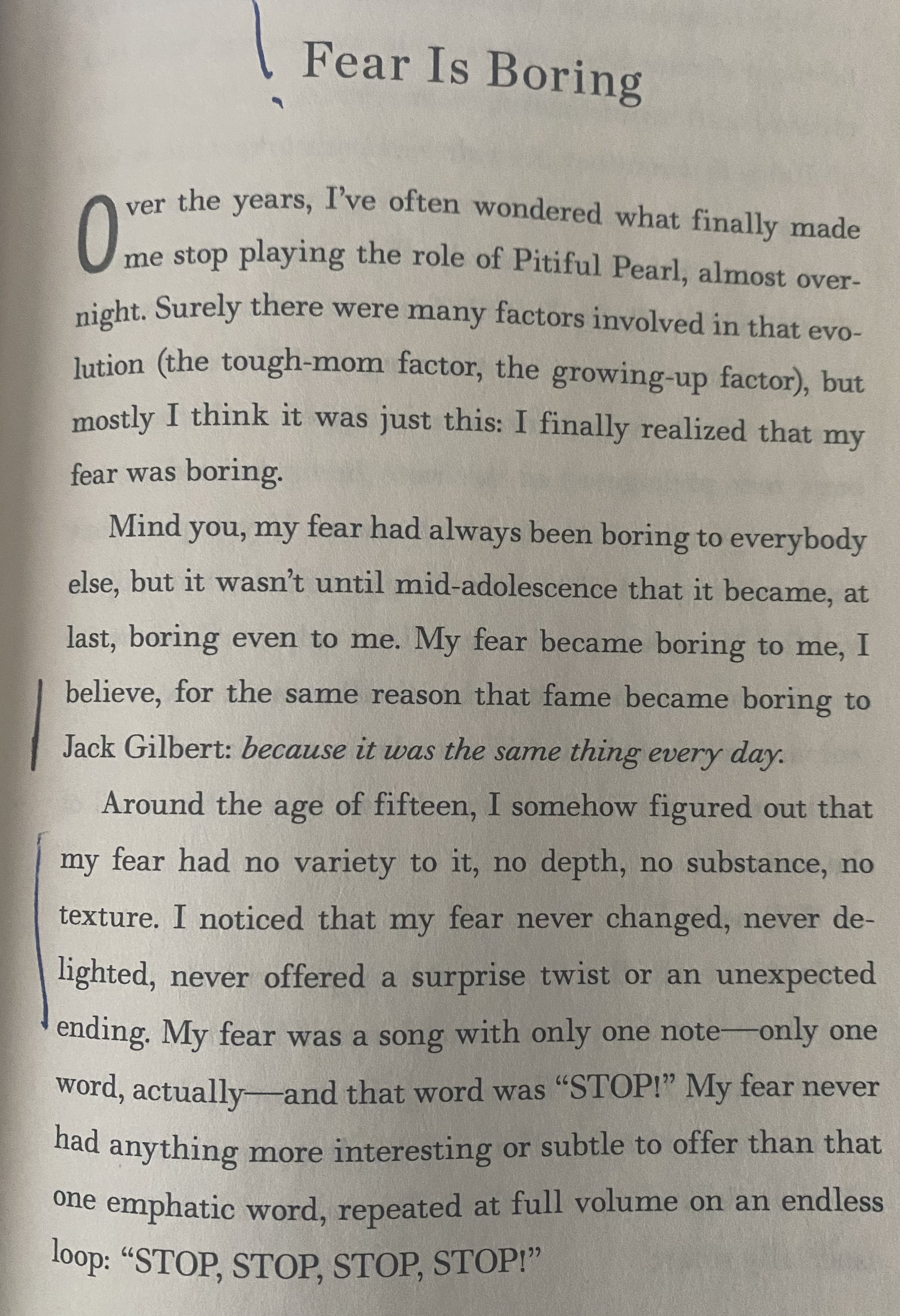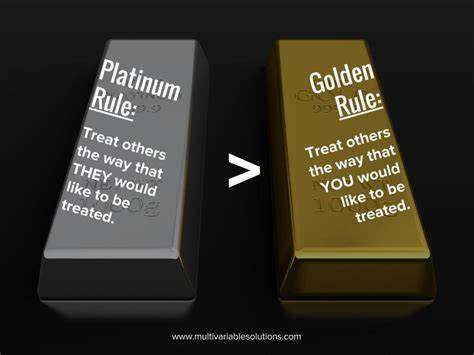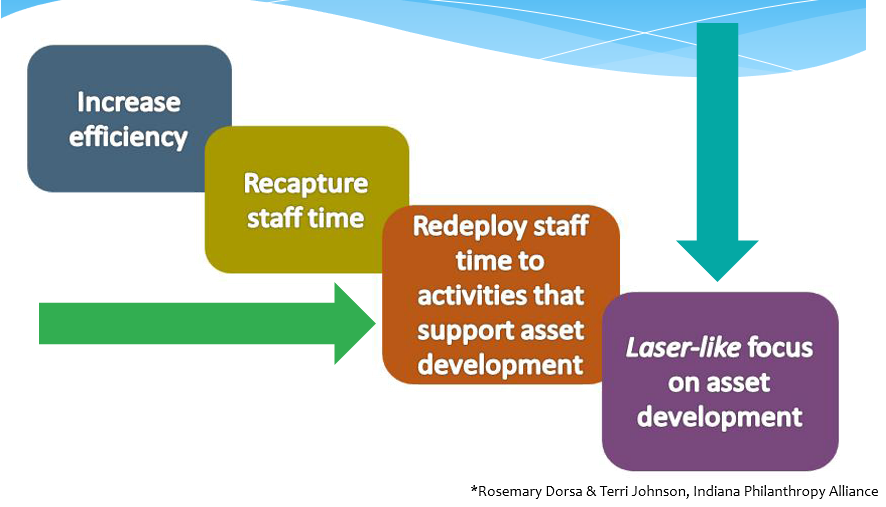The Platinum Rule
Jun 22, 2022
It’s a goal of mine to be a lifelong learner. So, I’m always stuffing some information in my brain. I’ve always got a podcast on in my car. I’m continually processing thoughts I reach in the blogs of others—it’s fun for me. Something I’ve always believed is that leaders are readers and I want to be a leader, so I’ve usually got a couple of books cracked at all times. Heck, I even dig a good documentary. I fly my nerd flag high and there is no shame in my game. It’s why I write this blog!

While I don’t always do something with everything I learn, I do feel like there are two ways I process information. It’s a ‘just in time’ or ‘just in case’ philosophy I developed a long time ago. In the book Big Magic by Elizabeth Gilbert, she says, “I believe that our planet is inhabited not only by animals and plants and bacteria and viruses, but also by ideas. Ideas are a disembodied, energetic life-form. Ideas are driven by a single impulse: to be made manifest. And the only way an idea can be made manifest in our world is through collaboration with a human partner. It is only through a human’s efforts that an idea can be escorted out of the ether and into the realm of the actual.”
So, I know for sure that some ideas that I learn come to me because I learn them just in time to impact my life or my work. I will escort them into the realm of the actual. Then there are other ideas that I’m not quite ready for…those ideas are saved for later just in case I need to know them—they aren’t quite ready to be born just yet.
It looks like this:

I always use a vertical line on the outside of the paragraph to denote which point is noteworthy. I add a dot to make an exclamation point on the ideas that are 'just in time', so I can find them easily. On this page, you can also see I've read this book twice. I highlighted in blue one time and black another time. Different seasons of my life make some ideas hit different. This system works really well for me. Try it and see what you think!
I’ll go back to books all the time looking for that one idea that I remember was written on the lower left-hand side of the page, and my unusual method of highlighting helps me bring the ideas back to life again.
All this to say, I’m learning and processing and thinking all the time about how the ideas could be knit together or how I should rethink an idea that I’ve held for most of my life. Recently, I was downloading a few podcasts to listen to on my flight home from vacation and one podcaster challenged my thinking about, of all things, The Golden Rule.
Like many of you, I was taught The Golden Rule at a young age: ‘Do unto others as you would have them do unto you’. If fact, this maxim can be found in almost every culture and religion, so most of us have heard it before and even integrated it into our own lives. That’s why I taught my kids the same lesson. I do recall my youngest son, Dalton, getting confused and originally thinking that The Golden Rule was ‘do unto others as they do unto you’. Although as tempting as that is, we laughed and retaught him as soon as we learned of his misunderstanding.
However, this specific podcast was talking about the dangers of The Golden Rule. My ears perked up since that’s always been a core belief of mine, so I was intrigued. The premise was as simple as it was ingenious. He said, if you’re always treating people the way that you’d like to be treated, it might not be good enough. Ouch!
That’s where the Platinum Rules comes in. The Platinum Rules means making sure you know how the people around you want to be treated. Wow…that’s a doozy. All this time as leaders, co-workers, and fundraisers, we’ve been treating people how we wanted to be treated and it may not even be close to how they want to be treated at all! Let that marinate for a minute, won’t you?

Of course, I immediately realized some Platinum Rule implications to our Left Brain Marketing Methods and Right Brain Marketing Moxie that could help us all raise more funds for our nonprofit missions if you’re willing to apply them.
Left Brain Marketing Methods: Sure, treating other people how you want to be treated is certainly better than treating them poorly. But what if you looked at marketing, stewardship, and communication with donors as a team sport? What if the messages you sent to you donors came from the person in your organization that knows how to apply The Platinum Rule to a specific donor segment? It’s worth thinking about.
Right Brain Marketing Moxie: Obviously, when it comes to donors and The Platinum Rule, one size does not fit all. So, it’s important to create campaigns that we know our donors will be happy to receive without wondering if we’ve spent too much because our 4-color professional graphics look just a bit too posh. With a bit of strategic creativity, we can find that much-needed middle ground. We’ll delve into how to do that today.
After all, if the Queen can have a Platinum Jubilee, we can have Platinum Marketing. Let’s do this!

Left Brain Marketing Methods: How I hadn’t learned of The Platinum Rule until now, I have no idea. But it brings a lot of clarity to left brain marketing methods that I’ve been implementing for years now.
Once you’ve embraced the idea of a MVA (Minimum Viable Audience), you know you’ve found your people. They have an affinity for your mission and the capacity to do something about what you might be asking of them. But even within that smaller, minimal, group, the messages they need to hear in your marketing will still vary. That’s all part of The Platinum Rule. Perhaps we are sending our donors the messages that we want them to hear, but that’s not enough anymore.
One left brain marketing method that could help is delegating ownership to your donor segments. Certainly, graduating from mass marketing to thousands of donors to donor segmented marketing is a huge step in the right direction. Keep that momentum going by determining who the best person in your organization is to ‘own’ each donor segment. By own, I simply mean answer this question: Who will be the person who comes to work every week thinking about that specific donor group, determining how best to bring the right message to them, and creating communications that will bring that donor to action? Once a person ‘owns’ a donor segment, it’s easier to home in on those donors to customize their messages in a way that feels very, well, Platinum.
Once you’ve segmented your donors into small groups—I recommend manageable groups of 50 or less—you can then determine who from your team will take ownership of that segment. Those owners could be teammates or Board Members, depending on how big your nonprofit is. It’s a misnomer that all donor communications need to come from the CEO or the Development Manager. Communications should come from a person in your organization that knows that donor segment well and can easily deliver a Platinum message. They know those donors and understand how to do unto them in a way that they would appreciate.

It could look something like this:
- A CEO might steward: (1) Board Members, (2) Past Board Members, and (3) Top 50 donors of all time.
- A CFO might steward: (1) Fund Founders and (2) Professional Advisors.
- A Development Officer might steward: (1) Loyal Donors, (2) Top 50 Prospects from the past 5 years, and (3) Planned Givers.
It’s a good discussion to have with your team—staff and Board. Who is the best person to communicate with each donor segment? Who speaks their language? Who gets them like no one else? It’s a good way to get The Platinum message to your people in a way that they want to read your stories and act on your asks. In practice, our team of five 'owns' donor segments like this:

Sure, treating other people how you want to be treated is certainly better than treating them poorly. But what if you looked at marketing, stewardship, and communication with donors as a team sport? What if the messages you sent to you donors came from the person in your organization that knows how to apply the Platinum Rule to a specific donor segment? It’s worth thinking about. And don’t worry about your voice, brand, or PMS colors so much. You can always have the marketing person on your team look everything over before it goes out—if that’s a concern of yours.
Right Brain Marketing Moxie: Nonprofit marketing is tricky. You want your product to represent your brand well, of course. And you don’t want it to look like it was printed on a ditto machine (But Oh, Em, Gee! Those of you my age or older know that distinct smell of a ditto and it takes me back.) You want to look professional; yet you can’t look too expensive or your donors will think you don’t need the donation or are wasting the money they do give you on four-color graphics, hiring an expensive marketing house, or a graphic designer. It’s a tough balance act!

Obviously, when it comes to donors and The Platinum Rule, one size does not fit all. So, it’s important to go beyond The Golden Rule when you’re creating and producing your marketing deliverables.
Sure, as a professional, especially if you have a degree in Marketing, you have a high bar. You certainly want more than a black and white, bland letter that looks like the generic label foods at a grocery store. You want the right PMS colors, 25# paper, and an attractive envelope. You want the piece to represent the quality you expect at your organization and the excellence you want to deliver to your clients—that’s total Golden Rule thinking.
But today we’re talking about the Platinum Rule. And that means considering what your donors might be thinking when they receive your mail in their mailbox. Will they believe the paper felt a bit too fancy—you know that fancy-paper feel that I’m talking about? If you use color, will they think it was unnecessary? If you hired a marketing firm or a graphic designer to develop the piece for you, will it look too luxurious? The kind of luxury that screams, ‘we really don’t need the donation we’re asking you to contribute after all’.
When it comes to right brain marketing moxie, you must think about The Platinum Rule. It’s important that you are proud of your quality, but only to the degree that your donors will see that quality as outstanding without overindulging—it’s a fine line!
So, here are a few things that we do that might help you. Incorporating one or more of these ideas could be useful to you.
- We often write something on the back of our cards to give them some additional information, so they aren’t guessing about the cost.
- We might say this mailing was paid for by a grant.
- Or that the mailing was created for a mere 6 cents—yeah, our CFO calculated that for us.
- Sometimes we say it was a made especially for them by us.
All those things show that care went into the mailing but it wasn’t an astronomical cost.

- One time a donor came in and asked me how we could afford to do a full-color mailing to 10,000 or more people in our database. We gladly told her that she was one of only 50 people that got that mailer. So, sometimes even telling them that they are one member of a distinct group that is receiving this will make them feel special while also inadvertently telling them that you didn’t go hog wild with the budget.
- If you are segmenting your donors, hopefully those groups are small and manageable enough that you don’t have to pay an outside printer additional costs. If you can print them in-house and save money, you can tell them that—for example, ‘printed in-house by happy people in matching socks’!
- Plus, if you are printing smaller batches of mail with your MVA in mind, you don’t have the need to go to a mail house or the bulk mail line at the post office anymore. That’s important to remember. You see, when mail comes from those places, it’s the ‘or current resident’ type of mail that typically doesn’t show the cost of the mailing on the envelope when it’s posted.
That’s not the case with regular mail. Now studies do show that an actual stamp, even placed a bit catawampus on the envelope, is much more likely to get opened. But if you do happen to have a postage meter at your office, the standard setting is to list the cost of the metered mail—a basic 53 cents or more depending on weight. That feature can be reset so it doesn’t show how much the mailer cost. No need for anyone to get upset because the price of postage is going up. You can’t control that. But you can control how it looks on the outside of your envelope. - Finally, there’s no shame in using a free nonprofit subscription from Canva, clipart, photos from Unsplash, Freepik, and Pikmonkey to design your own—even using Microsoft Word or Publisher. Sometimes simple is just best, and often easier. Try them on for size--easy is under-rated.

- All this harkens back to The Platinum Rule: Do unto others as they would want to be done unto them. So, you have to keep in mind what a donor might think is too much or over-the-top. That’s why I like printing smaller batches in-house. The smaller batches of just about anything can be done with a custom touch and it never looks too fancy because it’s literally printed on a color copy machine.
In my opinion, it balances nicely on that line between fabulous and frivolous. And that will be important to some donors.
I truly believe that when you know better, you do better. And that’s why I’m a lifelong learner—you learn something new every day. And if you know it, you can’t unknow it. So, what are you going to do with this new information now?
All My Best,
Dawn
[email protected]
dawn brown creative, llc.
P.S. Fundraising is hard, even though you make it look
oh-so easy! ♥
Frideas--Friday ideas are filled with
info and inspo!
Want to participate in some Knowledge Generosity,
here's your opportunity!
What do you do with an idea? You change the world!
Stay connected with news and updates!
Join my mailing list to receive the latest news, updates, and ideas for days!
Don't worry, your information will not be shared.
I seriously hate SPAM, like for real.
So, I promise to never sell your information, for any reason.


